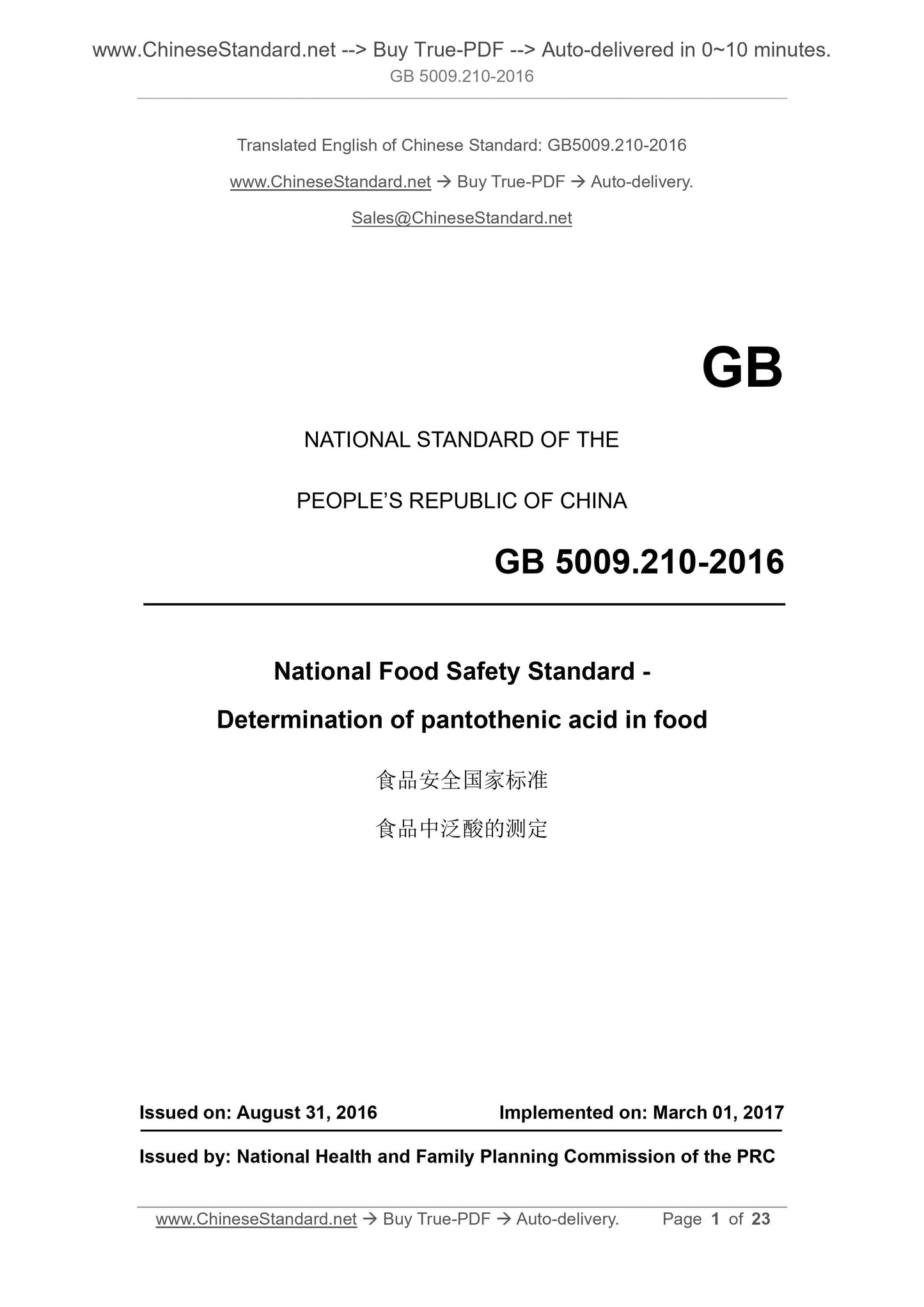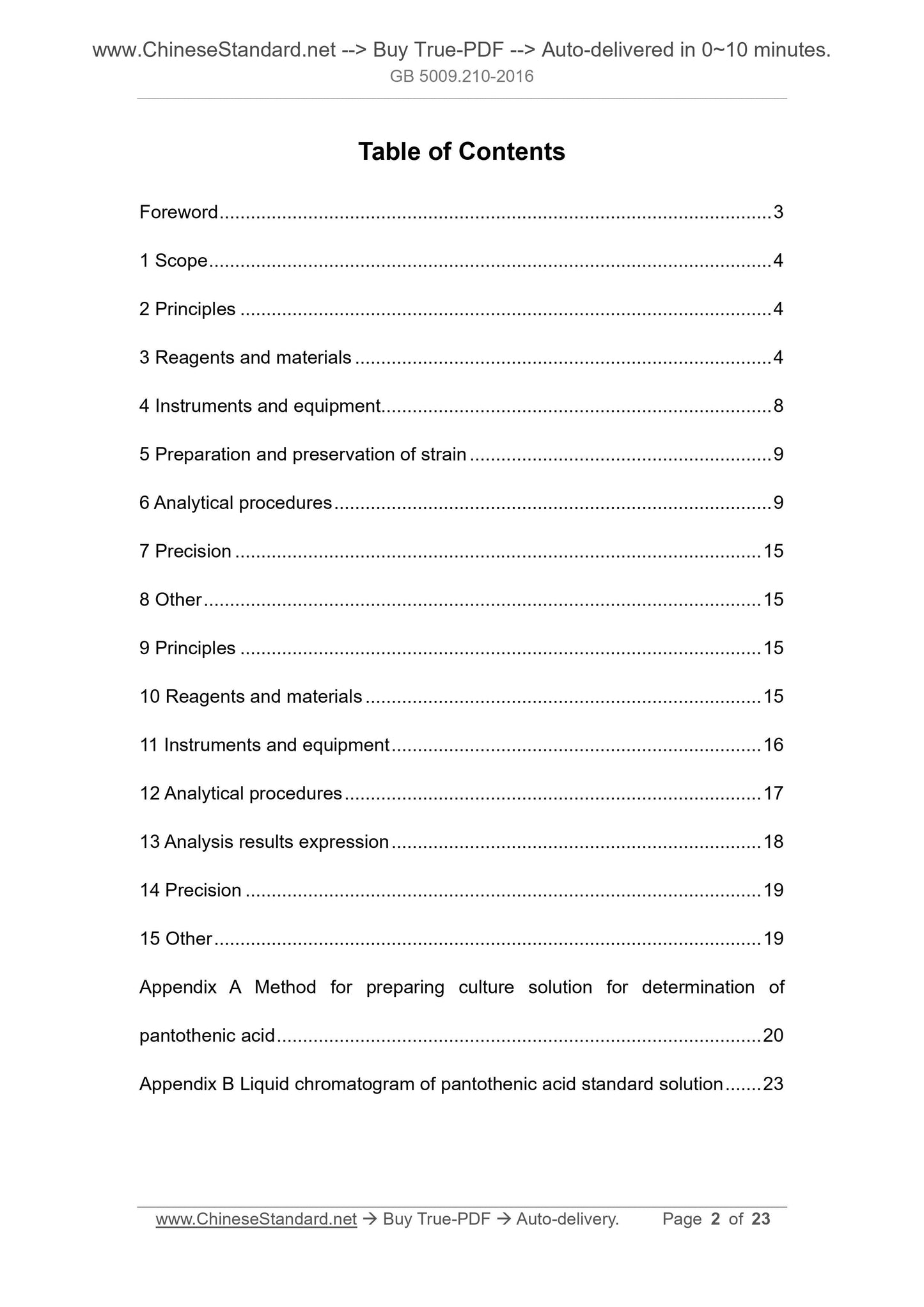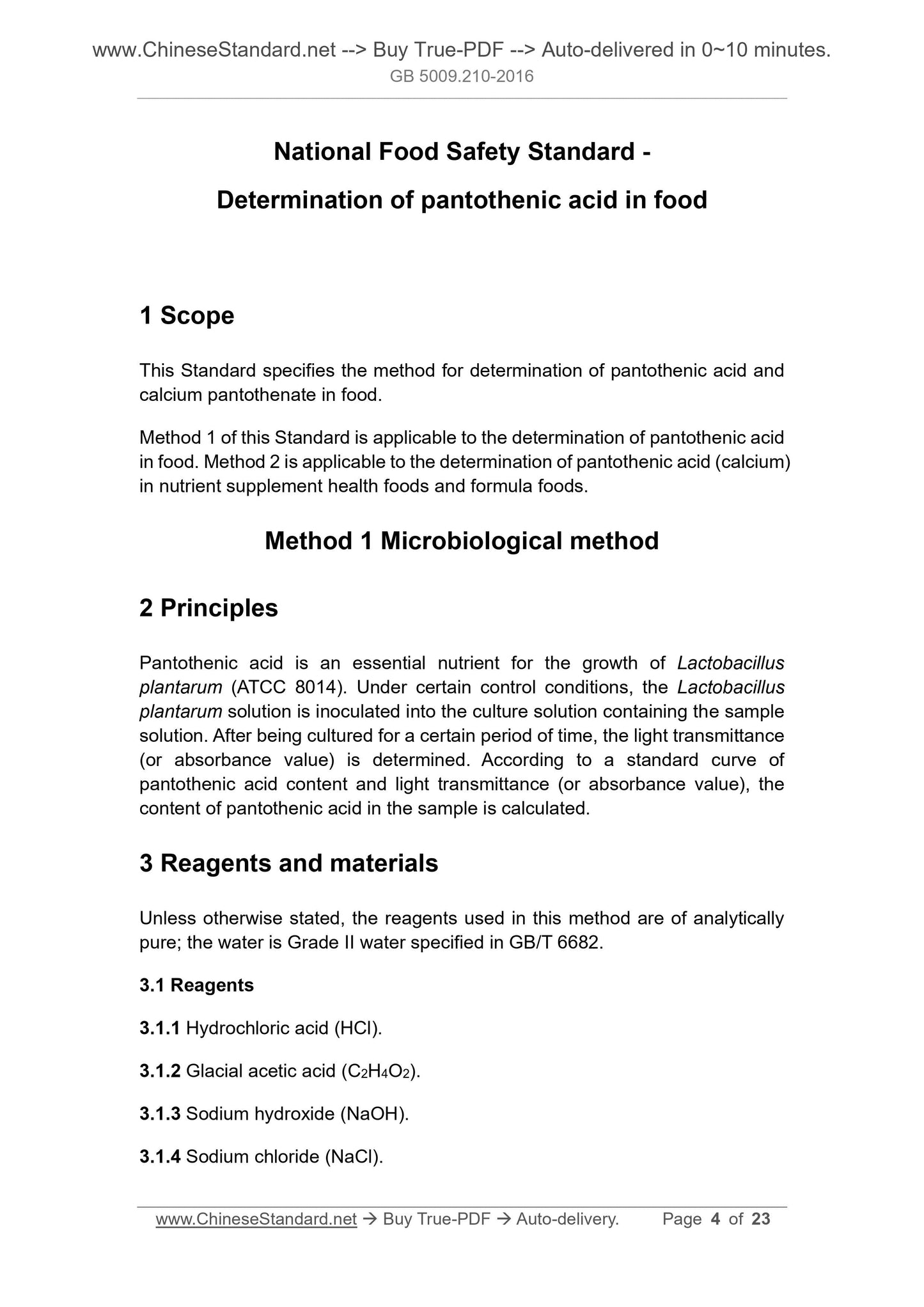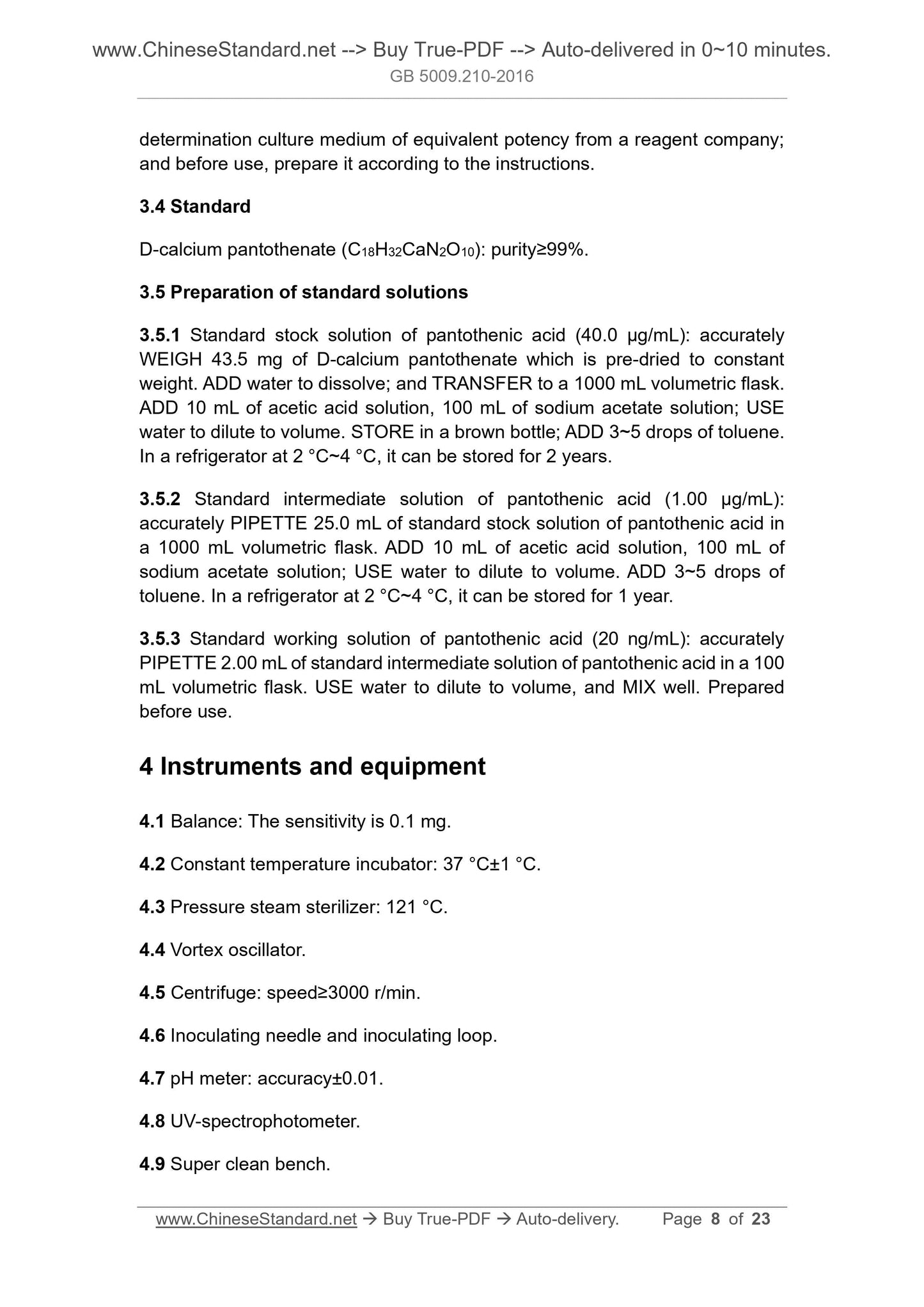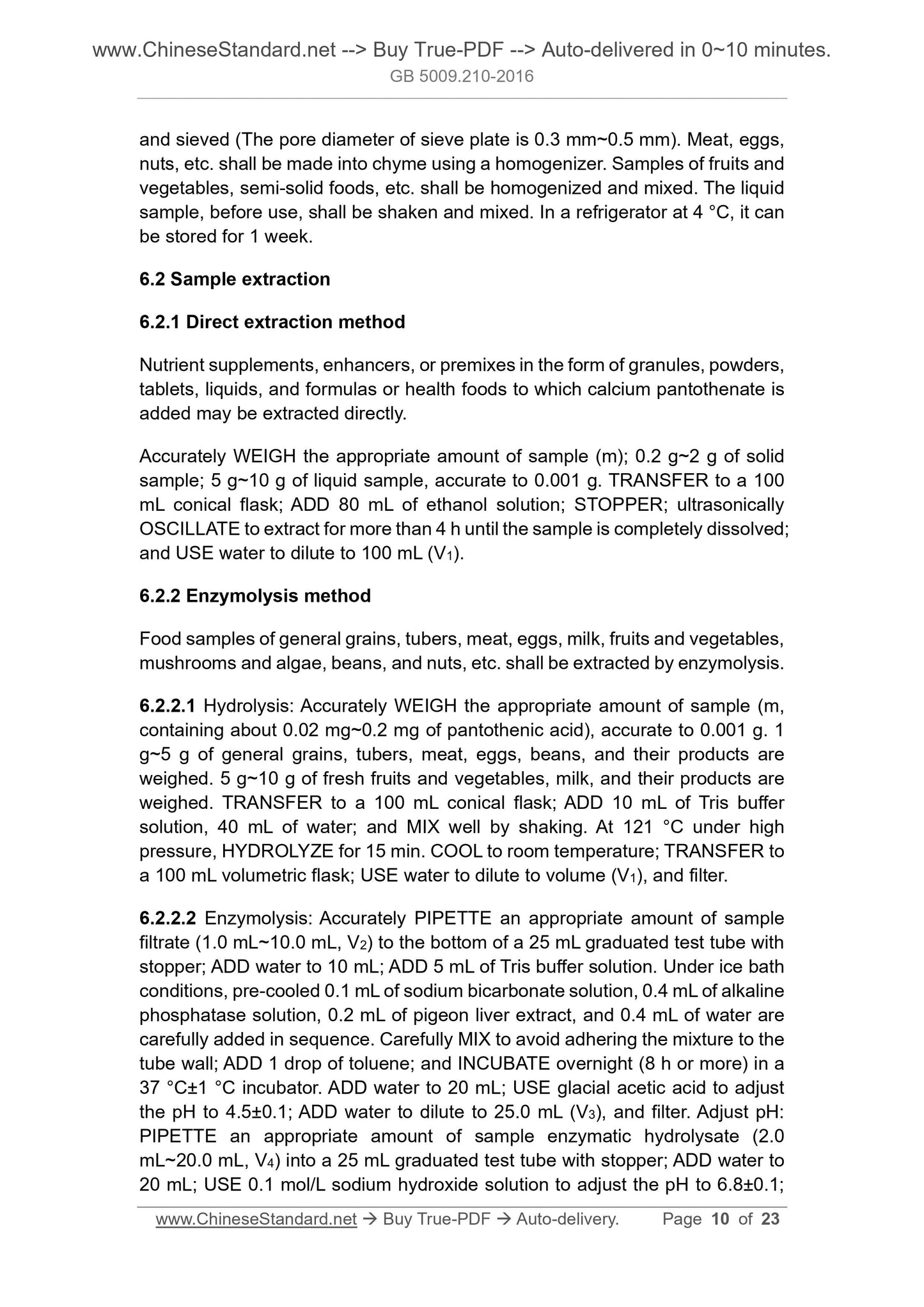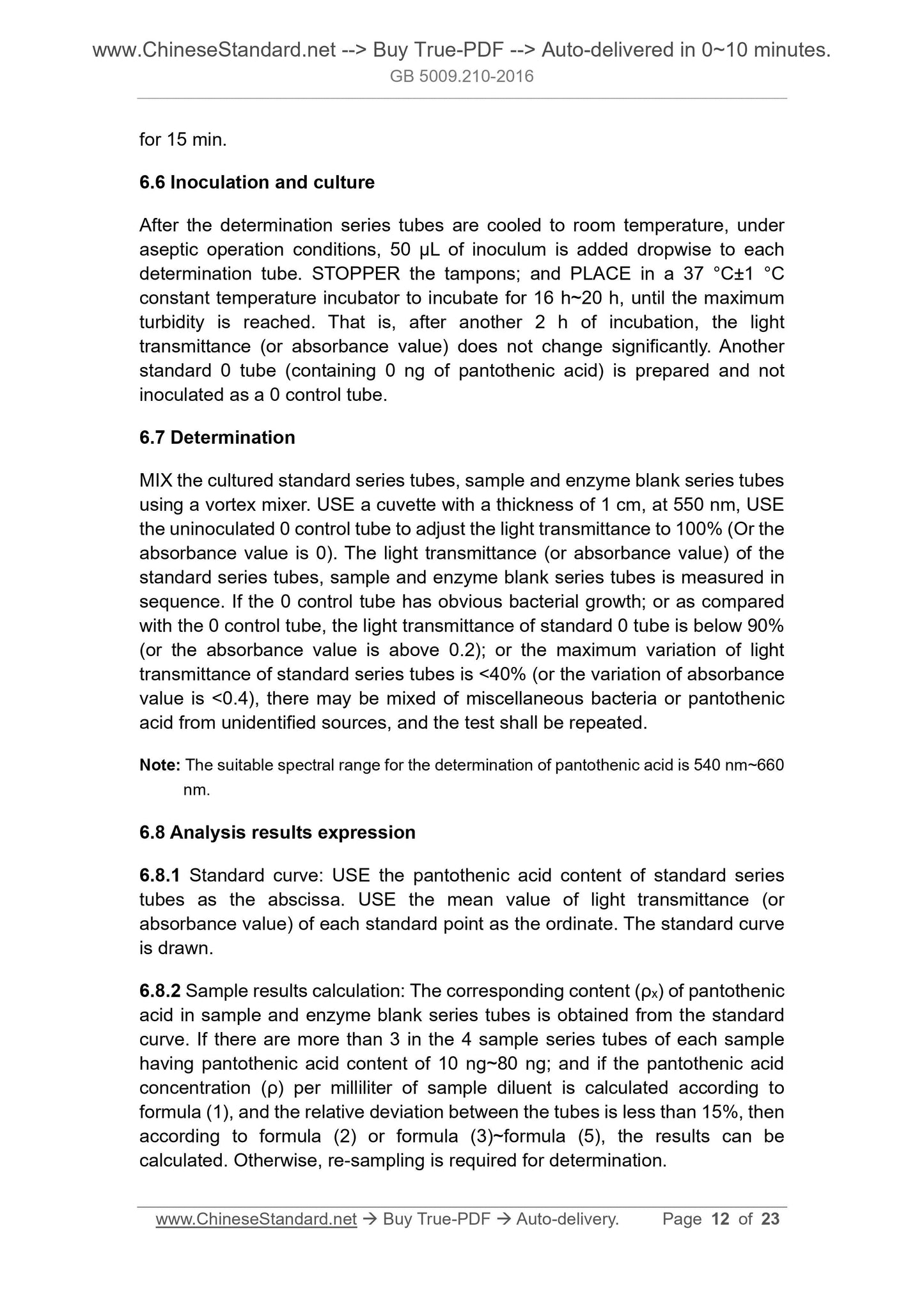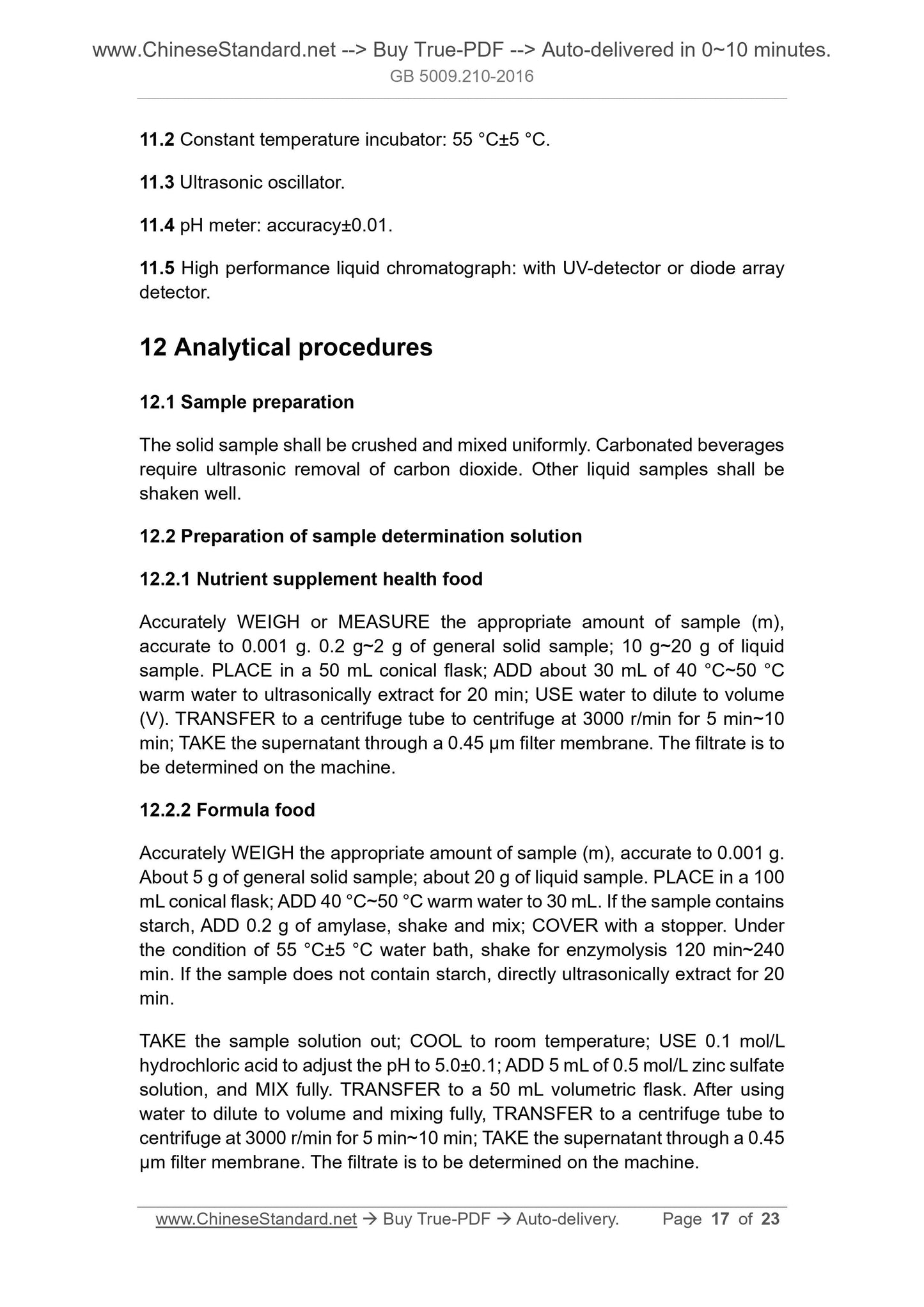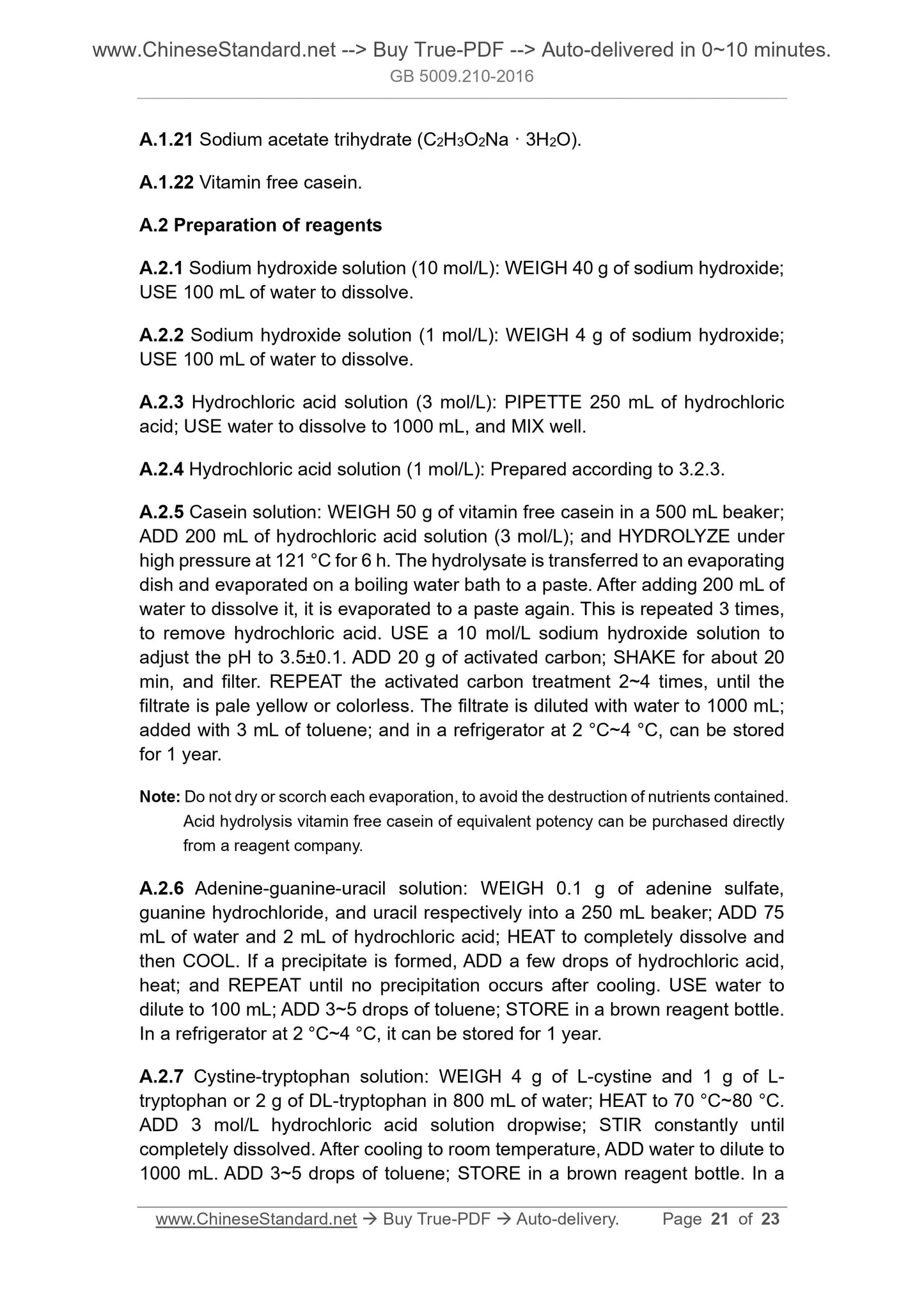1
/
of
10
PayPal, credit cards. Download editable-PDF & invoice in 1 second!
GB 5009.210-2016 English PDF
GB 5009.210-2016 English PDF
Regular price
$135.00
Regular price
Sale price
$135.00
Unit price
/
per
Shipping calculated at checkout.
Couldn't load pickup availability
GB 5009.210-2016: Determination of pantothenic acid in foods
Delivery: 9 seconds. Download (and Email) true-PDF + Invoice.Get Quotation: Click GB 5009.210-2016 (Self-service in 1-minute)
Newer / historical versions: GB 5009.210-2016
Preview True-PDF
Scope
This Standard specifies the method for determination of pantothenic acid andcalcium pantothenate in food.
Method 1 of this Standard is applicable to the determination of pantothenic acid
in food. Method 2 is applicable to the determination of pantothenic acid (calcium)
in nutrient supplement health foods and formula foods.
Method 1 Microbiological method
Basic Data
| Standard ID | GB 5009.210-2016 (GB5009.210-2016) |
| Description (Translated English) | Determination of pantothenic acid in foods |
| Sector / Industry | National Standard |
| Classification of Chinese Standard | C53 |
| Word Count Estimation | 15,161 |
| Date of Issue | 2016-08-31 |
| Date of Implementation | 2017-03-01 |
| Older Standard (superseded by this standard) | GB/T 5009.210-2008 |
| Regulation (derived from) | Announcement of the State Administration of Public Health and Family Planning 2016 No.11 |
| Issuing agency(ies) | National Health and Family Planning Commission of the People's Republic of China, State Food and Drug Administration |
Share
